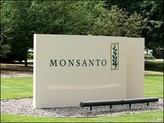Our environment and fragile eco-system: the silent victim of GMO
Talk to your doctor about GMO

During the last few years, more and more doctors have begun advising their patients to avoid GMO containing food products as trends appear to coincide their consumption with a host of human health problems. It has been found that eating a GM diet can create havoc in our bodies with links to autism, allergies, and sterility, as well as many other afflictions.
Reports show that this trend began after GMOs were introduced in America in the mid 90's, and continues to increase in countries where GM foods are consumed regularly to this day. The problem is two-fold; people are ingesting not only genetically engineered food products designed to produce pesticides or other gene expression effects, but the same food products are also dowsed in chemicals when the food crops are being grown. When consumers eat food derived from these GM crops, they are essentially ingesting insecticides, herbicides, and fungicides produced from the same companies who falsely claimed Agent Orange and DDT were safe for use around humans. As a consequence, consumers are especially at risk for developing gastrointestinal (GI) problems or internal toxin buildup due to this exposure. When there is a buildup of poisons in our system, it usually results in inflammation of the connective tissue which could lead to leaky-gut syndrome – a condition where waste not normally absorbed into the bloodstream leaks in through gaps in the GI track lining. Since the digestive system is a complex web of connective tissue designed to absorb foods and excrete wastes, if it is compromised, the body begins to suffer with aches and pains, discomfort, low energy, and cognitive or emotional troubles. These symptoms could be a sign of much more serious conditions so it is important to visit your doctor if you are experiencing even mild symptoms.
Reports show that this trend began after GMOs were introduced in America in the mid 90's, and continues to increase in countries where GM foods are consumed regularly to this day. The problem is two-fold; people are ingesting not only genetically engineered food products designed to produce pesticides or other gene expression effects, but the same food products are also dowsed in chemicals when the food crops are being grown. When consumers eat food derived from these GM crops, they are essentially ingesting insecticides, herbicides, and fungicides produced from the same companies who falsely claimed Agent Orange and DDT were safe for use around humans. As a consequence, consumers are especially at risk for developing gastrointestinal (GI) problems or internal toxin buildup due to this exposure. When there is a buildup of poisons in our system, it usually results in inflammation of the connective tissue which could lead to leaky-gut syndrome – a condition where waste not normally absorbed into the bloodstream leaks in through gaps in the GI track lining. Since the digestive system is a complex web of connective tissue designed to absorb foods and excrete wastes, if it is compromised, the body begins to suffer with aches and pains, discomfort, low energy, and cognitive or emotional troubles. These symptoms could be a sign of much more serious conditions so it is important to visit your doctor if you are experiencing even mild symptoms.









